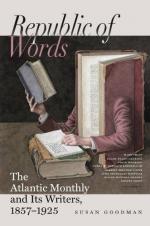The French planter took his slaves on credit, and sought to discharge his debt with the crops which they raised. This increased the consumption of negroes, and he was constantly in debt for fresh ones. To stimulate the production of sugar, the Government lifted half the entry-tax from each negro who was destined for that culture.
A table which follows shortly will present the exports for 1775 of the six chief products of San Domingo, Martinique, Guadeloupe, and Cayenne. But we must say something first about the value of the livre.
In the Merovingian times, the right of coining money belonged to many churches and abbeys,—among others, to St. Martin de Tours. There were seigniorial and episcopal coins in France till the reign of Philip Augustus, who endeavored to reduce all the coin in his kingdom to a uniform type. But he was obliged still to respect the money of Tours, although he had acquired the old right of coinage that belonged to it. So that there was a livre of Paris and a livre of Tours, called livre tournois: the latter being worth five deniers less than the livre of Paris. The tendency of the Crown to absorb all the local moneys of France was not completely successful till the reign of Louis XIV., who abolished the Paris livre and made the livre tournois the money of account. The earliest livre was that of Charlemagne, the silver value of which is representable by eighty cents. It steadily depreciated, till it was worth in the reign of Louis XIV-about sixty cents, from which it fell rapidly to the epoch of the Revolution, when its value was only nineteen cents, and the franc took its place.
It is plain from this, that, when livres are spoken of during a period of a hundred years, their precise equivalent in English or American money cannot be stated,—still less their market-relations to all the necessaries of life. The reader can therefore procure from the statistics of these periods only an approximative idea of the values of crops and the wealth created by their passing into trade.
A great deal of the current specie of the island consisted of Spanish and Portuguese coin, introduced by illegal trade. A Spanish piastre gourde in 1776 was rated at 7-1/2 livres, and sometimes was worth 8-1/4 livres. A piastre gourde was a dollar. If we represent this dollar by one hundred cents, we can approach the value of the French livre, because the gourde passed in France for only 5-1/4 livres; that is, a livre had already fallen to the value of the present franc, or about nineteen cents.




